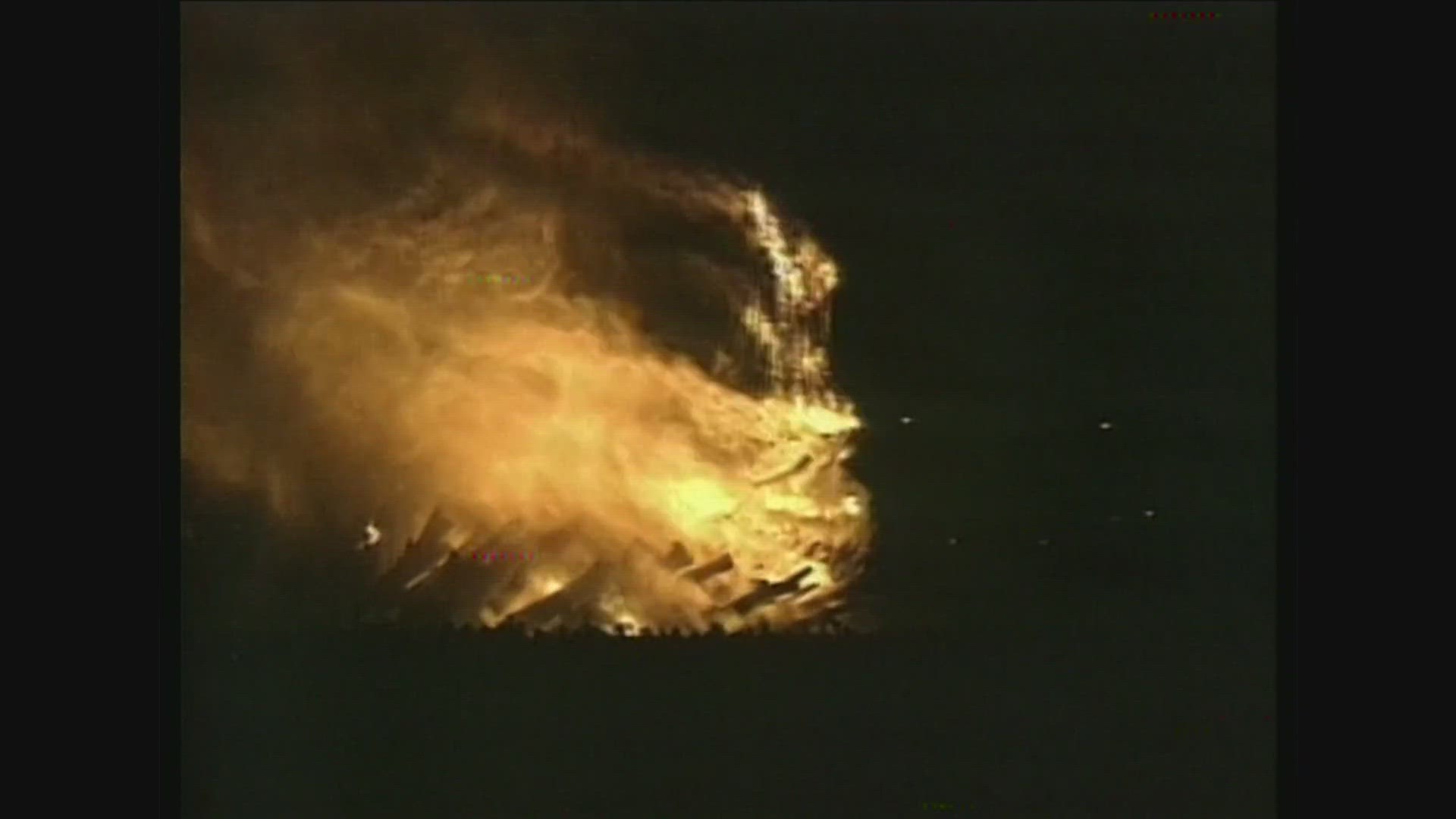DALLAS — One of Texas’s greatest traditions became one of its greatest tragedies on November 18, 1999.
A student-constructed, 60-foot stack of logs collapsed on the Texas A&M University campus. 12 people died while building a bonfire meant to burn days later, on the eve of the legendary rivalry football game between Texas A&M and the University of Texas.
As survivors and students stood in disbelief watching a rescue and recovery operation that November morning, they told WFAA that a bonfire would definitely burn again on campus.
“It’s a tradition that should not stop because of one tragedy,” one survivor told WFAA, holding his bandaged arm after he escaped the stack.
“I think it’s too big of a deal to get rid of,” another student said.
Twenty-five years later, bonfire remains a suspended tradition.
But now, a committee is in the “preliminary stages” of considering ways to bring it back to campus, according to a letter John Bellinger, a member of the Texas A&M University System Board of Regents, sent to family members of victims.
WFAA obtained a copy of the letter.
Bellinger is co-chair of a committee charged with recommending to Texas A&M President Mark Welsh what traditions to renew ahead of the November rematch between the Aggies and Longhorns as UT joins the southeastern conference.
For the last 12 years, Texas A&M students have built an unsanctioned bonfire off-campus and Bellinger wrote it is a “very real safety concern.”
So, the committee is weighing how system agencies might gain official oversight of the bonfire. That might mean the bonfire is moved back on campus, the letter said.
Fort Worth attorney Darrell Keith represented many of the families and survivors.
Their legal battle lasted 14 years.
He said his clients always had mixed views about whether bonfires should resume.
“Several of my clients were adamantly opposed to bonfire coming back on the Texas A&M campus,” Keith said. “There were other clients willing to have it come back, provided they had professional supervision or it was constructed by professionals.”
The rivalry committee will bring its ideas to the Texas A&M president in May, according to Welsh’s Chief of Staff, Susan Ballabina.
“After the president is briefed, he will share his decisions on ideas that will be implemented,” Ballabina said in a statement.
Bellinger did not respond to a call or text from WFAA asking for more information.
A spokesman for the board of regents did not respond to a call seeking clarity on whether the entire board is in favor of resuming an on-campus bonfire.
Keith said he supports reinstating it, but only if the bonfire is built with close professional supervision of engineers, architects, and construction experts.
“I was always for bonfire as a great tradition at Texas A&M,” Keith said. “But I was always against a fatally defective bonfire. And I still am.”

